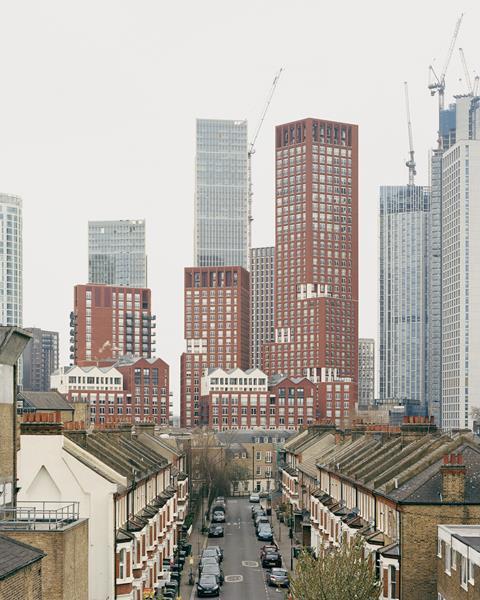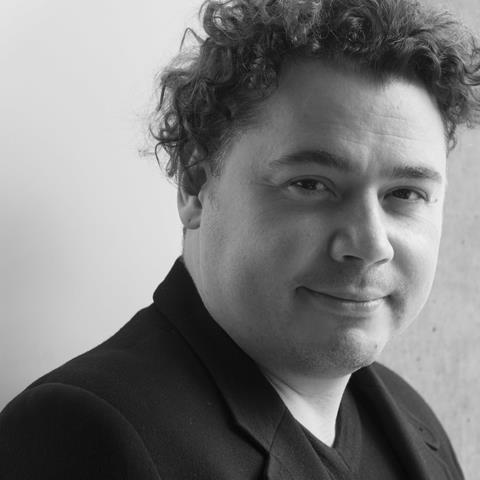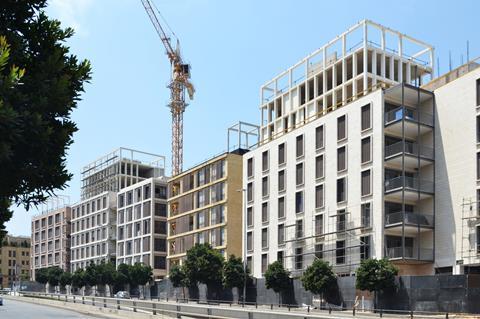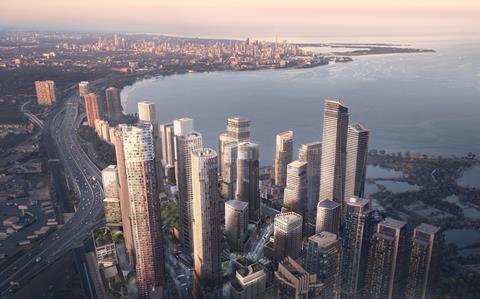Firm founded in 1984 has built a reputation for understated and sensitive design. It has also been slowly building an international business, writes Ben Flatman

There are certain practices that form part of the professional landscape. Founded in 1984 by Bob Allies and Graham Morrison, Allies and Morrison is one such firm. Producing consistently good but often understated work, it has grown over the decades to become one of the stalwarts of the UK architectural scene.
Notable projects have included the conversion of Arsenal’s former ground at Highbury into residential accommodation, the high-density Keybridge development in Vauxhall, and the Holland Green develpment with OMA adjacent to the former Commonwealth Institute building in Kensington. A common strand has often included the retention and restoration of historic structures and a sympathetic response to context.
Now, as the founding partners gradually step back to more consultative roles, Allies and Morrison is entering a new phase, with an increasing focus on growth through international work. In this interview, three generations of partners discuss succession planning, and their vision for the future of the practice.
Continuity and change

Managing partner Jo Bacon was one of the first members of staff to join the practice in its early days. When she started in 1987 it was just the two founding partners, plus Paul Appleton (also a partner) and herself.
Although she has spent almost her entire career at Allies and Morrison, during her recent bid for the RIBA presidency she was able to plausibly claim that she had worked in every different size of practice, from a small design studio through to a large partnership. This was because she has been there for every stage of Allies and Morrison’s evolution – and played a key role in the practice’s growth.
She has been managing partner since 2012. Having had to set her RIBA ambitions aside for the time being, she is fully focused on the practice and its future. “Succession has been underway for years,” she says, highlighting how she and Appleton were made partners in 2001. “Generational change is constant.”
Graham is still around working with us on projects. He still has a strong relationship with the practice
On the day of our interview, the practice has announced the appointment of two new partners, Angie Jim Osman and Daniel Elsea. These changes follow close on the heels of Graham Morrison’s decision to take a step back from day-to-day management to become “partner emeritus”.
Bob Allies, who is two years younger than Morrison, remains more closely involved with the day-to-day running of the business, but he too is pursuing other interests. These include a more prominent role within the architecture faculty at the British School at Rome.
“Graham is still around, working with us on projects,” says Bacon. “He still has a strong relationship with the practice.”
There are now 14 full-time partners, with six more in consultative roles. “We are a very good, old-fashioned partnership in how we work together,” Bacon adds. “We are very much a team.”

At this point fellow partner Alfredo Caraballo explains how “the basis of Allies and Morrison’s design ethos is continuity and change”. Caraballo, who is originally from Venezuela, joined in 2004 and became a partner in 2015. He has been leading on much of the practice’s international work.
The concept of continuity and change is one that Caraballo says also applies to the partnership. “It’s how we see the continuous evolution of our practice.”
Caraballo sees the mix of generations among the partners as being a key strength. Each of the partners has their own specialisations and interests.
New partner Jim Osman is originally from Canada and has been helping to build a growing client base there. Elsea, who is from Los Angeles, has a wide-ranging role including responsibility for communications and business development.
Brexit and the pandemic
When asked how Brexit and covid-19 have affected the practice, Bacon replies by saying that they have had “no significant impact” in terms of the business and its staffing levels. But she then acknowledges that Brexit has changed the jobs market.
“The biggest challenge from Brexit has been about attracting talent to London,” she says. “It’s no longer as attractive an economic and cultural location for architects as it was 10 years ago.”
Exporting a British approach to placemaking

The diverse backgrounds of the partners is perhaps also a reflection of the increasingly international outlook the practice is taking towards business development. Over recent years Allies and Morrison has been working on projects in Lebanon, India and France, among other countries.
Canada has become a particular focus. “We were very lucky to win several competitions there,” says Caraballo. “Our work there carries on growing.”
New partner Elsea says it was the enthusiastic response of overseas visitors to Allies and Morrison’s UK projects that contributed to the practice’s increasingly global outlook. “It made us think we should be looking more internationally for the next job,” he says.

Allies and Morrison has always had a strong reputation for its urbanism and both Caraballo and Bacon repeatedly reference the way in which this is driving growth and the move into new markets. “We have a certain approach to placemaking,” says Caraballo. “It’s about density, human-centred planning and what we refer to as the ‘urban picturesque’.”
Allies and Morrison has been closely involved in some of London’s biggest recent masterplanning schemes, including those at Kings Cross and the London Olympics site in Stratford. This type of work is now at the centre of the practice’s plans for growth. The practice is currently working on a major reimagining and expansion of the All England Lawn Tennis Association’s site in Wimbledon, to include a massive new park and third show court.
It’s a very exciting moment for the practice. Our built work in London and the UK is informing our work internationally
Another key area of interest is “knowledge-led regeneration”, which includes the growing role that universities are playing in driving urban change. Caraballo notes that “universities are increasingly driving regeneration beyond their campuses” through their estates and investments.

Caraballo believes the work that Allies and Morrison has undertaken in all these areas is a key selling point when it comes to winning work abroad. He points to North America in particular, where attitudes towards urbanism and city living are increasingly aligned with the ideas that Allies and Morrison has been exploring for decades.
“It’s a very exciting moment for the practice,” says Caraballo. “Our built work in London and the UK is informing our work internationally.”
For the time being though, working in North America means looking for local partners with which to collaborate. “It’s a model that works well,” says Bacon. “There’s no point going to another country and assuming you can do it all straight away.”
>> Also read: Allies and Morrison announces new partners as Graham Morrison takes step back
Although still primarily London-based, the practice also has offices in Cambridge, Manchester, Liverpool and Dublin. While none of the 320 staff are currently permanently based outside the UK and Ireland, this could soon change.
“We are one of the most successful and stable practices in the UK,” says Bacon. “It’s now time to spread our wings to take those skills internationally.
“We are definitely taking a more determined look at opening a North American office. But we will remain a British and London practice – that’s at the core of our identity.”
Postscript
















No comments yet